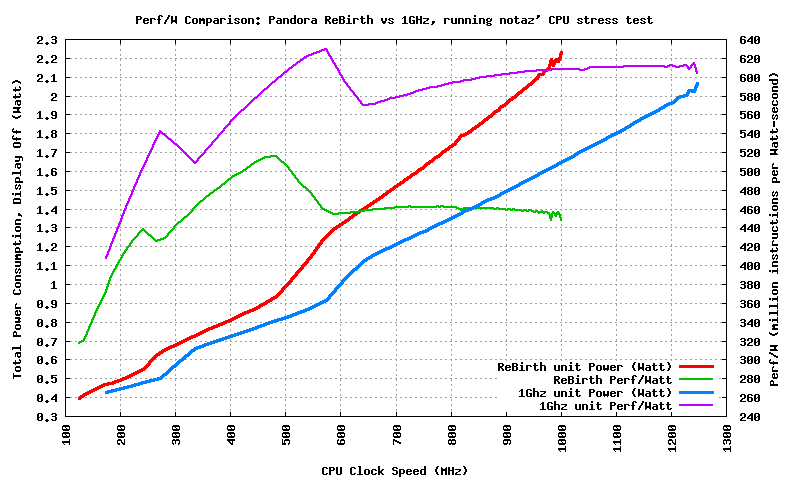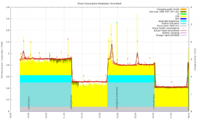WizardStan
Mega GP Mania
- Joined
- May 24, 2008
- Messages
- 16,733
Eeeh, the math actually starts getting kind of complicated.Suppose it takes 5 seconds @600Mhz to do something, and it takes only 3 seconds @1000Mhz to do that same something. For a fair comparison we'll normalize the time: at 1000Mhz you have 3 seconds of high overclock usage and 2 seconds of sleep, at 600Mhz you have 5 seconds of normally high usage.When "sleeping" it uses less energy anyway. It kind of sounds like there wouldn't be much of a difference (after all of these optimizations you mentioned) from setting it to OPP3 @ 600 and OPP5 @ 1000 for my CC unit in terms of how much battery life I will have (if I was running the same set of applications in either instance)
The 3 seconds at 1000Mhz is going to use more than the first 3 seconds at 600Mhz, right? That should be obvious, it's going faster so it needs more power. And the last two seconds are going to use a lot less power, again obvious because sleep uses almost nothing while full usage at 600Mhz is going to use a lot.
What isn't obvious is exactly how much more is required in those first 3 seconds: power usage isn't linear, it's a curve; the faster the CPU goes, the more power it needs to go just a little faster, so 1000Mhz doesn't use 5/3rd of the power at 600Mhz as you might think, it's probably more like twice the power, but I don't actually know for sure (someone else probably has some fancy graphs with real numbers). The complication comes from whether the extra power used in those first three seconds is balanced out by the last two seconds of sleep. And then you throw in the power differences between OPP3 and OPP5 while active and idle and things get more confusing.
In a practical sense, it all balances out and you shouldn't worry about any of this. The CPU sleep is really, really good, just set it to OPP5, 1000Mhz and forget it.



